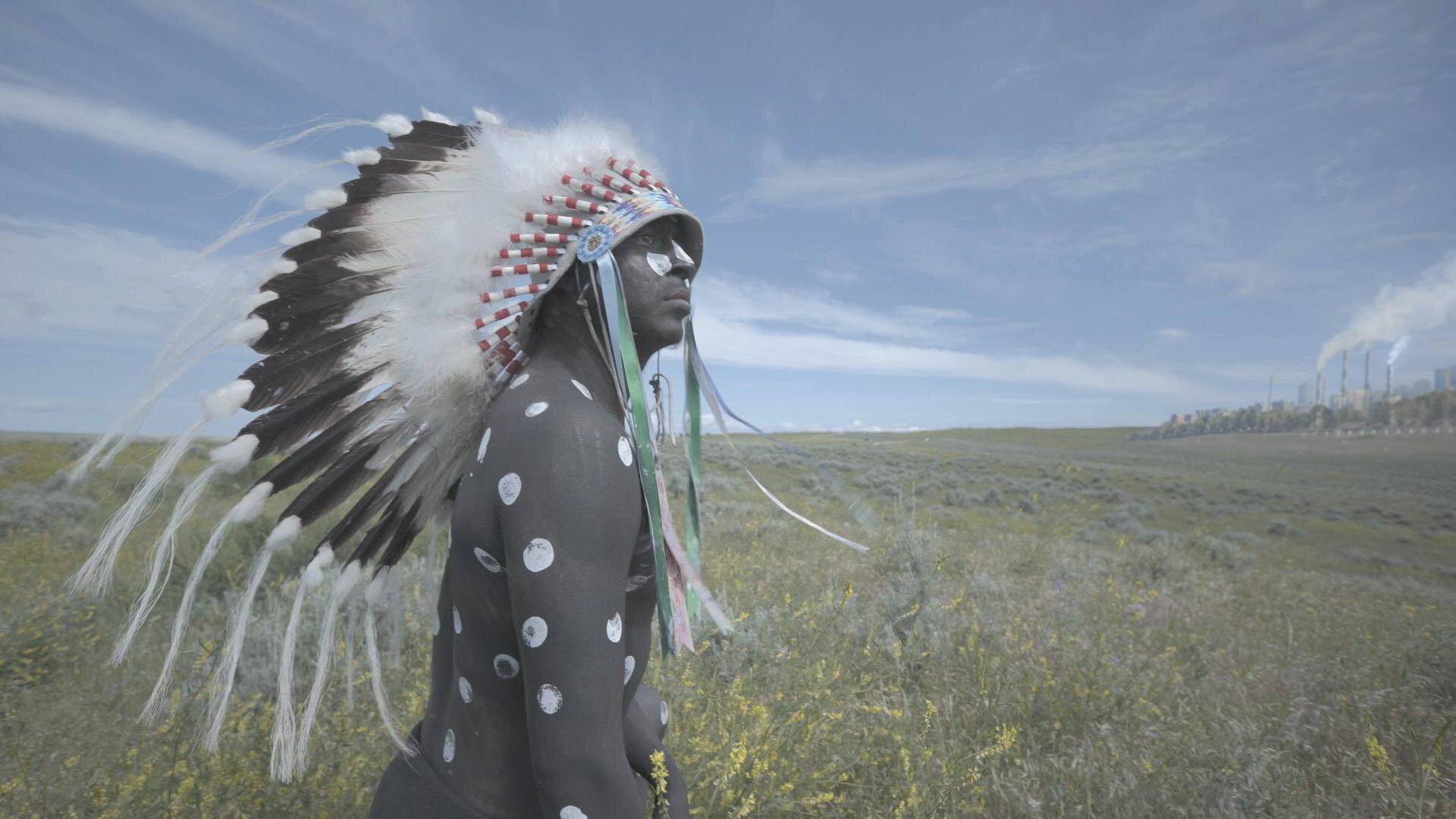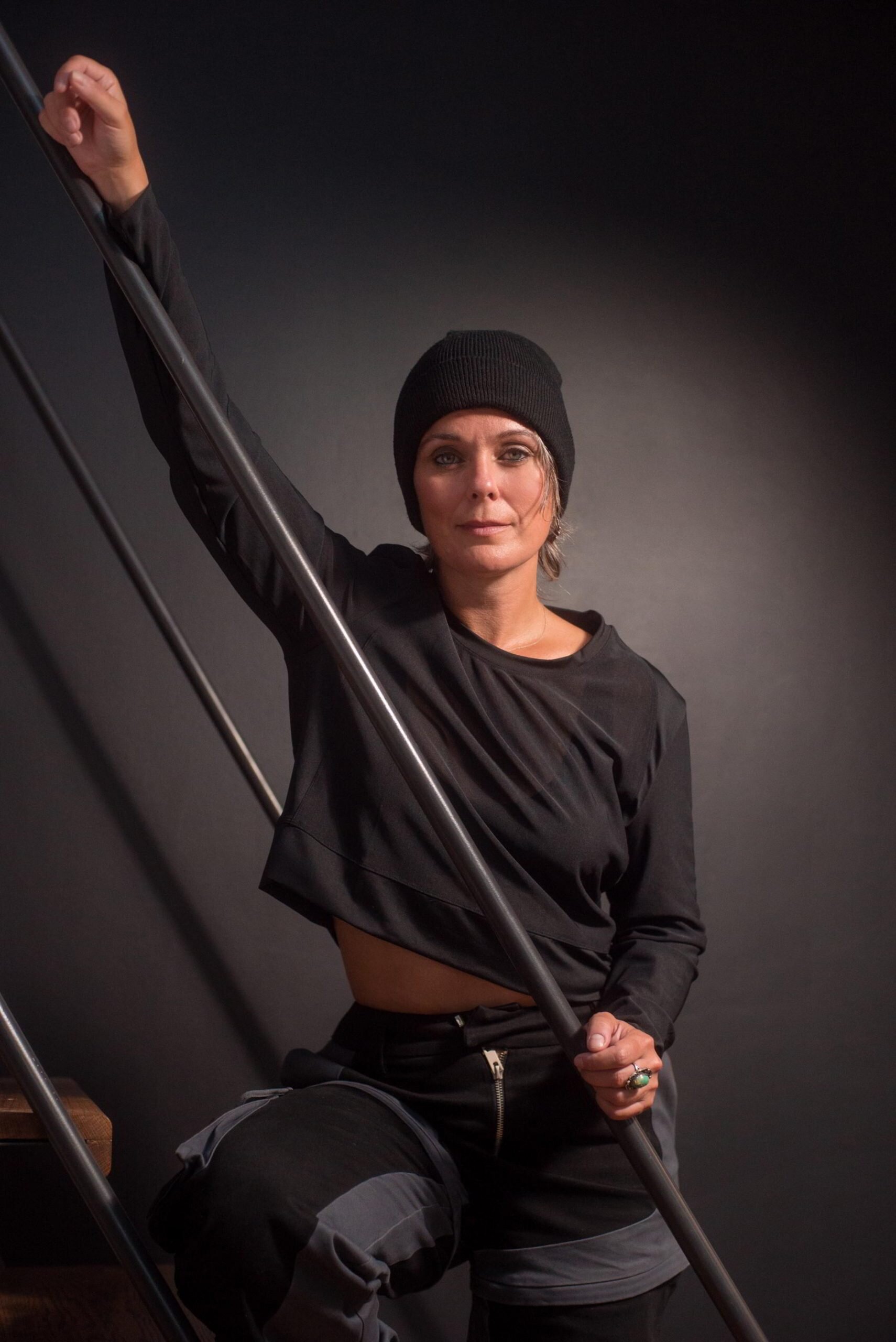Original-Cin TIFF interview: Michelle Latimer on outrageous Indigenous imagery and her stylistic approach to Thomas King's Inconvenient Indian
“Historical recreations,” like Custer’s Last Stand, are the butt of acidic humour in Thomas King’s book The Inconvenient Indian, and in Michelle Latimer’s stylistic activist documentary of the same name..
It’s part of King’s thesis that “Dead Indians” are the stereotypical images we’ve tended to preserve in the lens of white “settler” culture.
So, it’s ironic that the Thunder Bay-raised Toronto-based filmmaker traces the awakening of her consciousness to a summer job at age 14 at Old Fort William, where she played the part of an early 19th Century Metis woman. (Latimer is of Metis and Algonquin heritage).
An actor from the Little Big Horn “historical recreation.”
“That was my first job,” she recalls, “dressing up as a Metis woman in a wigwam. Here I was in high school, in my summer job, teaching people about my culture. We weren’t really learning about our culture in school.
“I did not grow up learning about Residential Schools. It was something I learned about much later in my life. My family is pretty Christianized, my mother’s side of the family anyway.”
Was she typecast as a Metis at Old Fort William? “I don’t know, I was so young at the time. But I got to connect with a lot of interesting elders who taught me a lot about traditional medicines, beadwork. I did my first set of moccasins there, sewing them and beading them. All of that was amazing.”
“And then I went to Concordia (University) for theatre, and my minor was in film studies. So, I watched a lot of old silent films, from German expressionism to old Westerns and things like that. It was kind of a reminder of the complex relationship Indigenous people have had, not just with Hollywood but with cinema in general.”
The teen who discovered her culture at a tourist attraction, is, these days, one of the most prominent voices among Indigenous filmmakers. Already known for her directing in the resistance doc series Rise, Latimer is represented two-fold at this year’s Toronto International Film Festival, with both Inconvenient Indian (Saturday at the TIFF Bell Lightbox) and the six-part CBC-produced miniseries Trickster (two episodes of which are presented in a feature-length presentation at the Lightbox Tuesday).
Michelle Latimer
The latter is based on Eden Robinson’s book Son of a Trickster, set in Kitimat, B.C., where a young man in a poverty-stricken community discovers his mystical lineage from Indigenous lore, and lives a life amid episodes of magical realism (starting with a talking crow). Many have compared Trickster to Twin Peaks, a comparison that Latimer, a David Lynch fan, greets with pride.
By the author’s own admission, The Inconvenient Indian is a history book minus footnotes (his contention: history is just stories we choose to tell). But it is a thorough history, nonetheless, peppered with wry asides as he wades through the many attempts to move Indigenous people out of the way while white settlers grabbed land. From the Trail of Tears, to today’s Ipperwash and Oka, he uses mordant humour and sarcasm to pierce through the shaky justifications used to “tame” a continent.
Latimer shares King’s sense of humour, but balked at producing a historical doc. Her Inconvenient Indian is a trippy, “experiential” art-house film, with the author himself on a cab ride to “the attic of his mind” (a theatre) while a trickster-like coyote does the driving.
Outrage and humour are not mutually exclusive, and Latimer is still amused at some of the outrageous things that ended up in the film. The Custer/Battle of Little Bighorn re-creation (which actually takes place in Montana) is one. She laughs when I suggest sarcastically of the staged massacre (in which the attacking Natives use spears and arrows) that the Lakota Sioux probably had guns in real life (they did).
“That scene is so funny because it took place on the Crow reservation and the Crows were infamous for being scouts for Custer’s troops. So, they weren’t the most popular among the Lakota and Dakota. But there it is, every year, on the Crow reservation in Montana.”
A trip to Los Angeles was even more surreal. “To be honest, I was a bit naïve. I knew I wanted to go to L.A. and find a Hollywood Western costume, and it happened to be around Halloween. So, I took a chance and I said, ‘Let’s go into a Halloween store and see if they’re selling anything.’
“I was shocked when I saw the Colonial Boy Costume, and Squaw Costume and Indian Princess Costume. They’re selling these for Halloween!
“And then we went to the parade you saw. I call it the “Appropriation Montage.” The West Hollywood Halloween Parade. I always talk to my crew when we shoot and we kind of tune in to what we want – in this case, someone appropriating across cultures.
“Well, sure, immediately we see someone dressed in a sombrero, and someone is a Hari Krishna. Then, I couldn’t believe how many instances there were of people wearing headdresses. I thought we would be lucky if we saw one. We weren’t five minutes into that parade and I was like, ‘Oh my God! There’s a headdress.’ It was unbelievable.”
And where King does indeed play historian with the recent history of resistance protests, giving the context for the Okas and Ipperwashes that was often missing from media coverage, Latimer felt a montage suited her film more. “Some of that montage is Ipperwash, some is Oka, some is Caledonia. There are many, many, many resistance movements in that montage. I didn’t want to label them.
“When the Woman Warrior at the checkpoint says, ‘Nothing has changed in 150 years, you’re still coming with your guns. You’re still coming for our land,’ I kind of wanted that to be the message without being expositional.”
Latimer previously paid her dues in 2016 with on the ground reportage for Rise, of the Standing Rock reservation’s protest against the Dakota Access Pipeline, a lengthy confrontation that included water cannons and attack dogs.
“It really changed my life being in Standing Rock for those nine months, personally and professionally. Just being on the ground as an activist was stressful enough. But to have a focus and to document this moment in history, it kept me out of my own head and kept me from being anxious and scared. Because it got pretty scary there for a while.
“It was incredibly validating that the world wanted to see those stories. But when I came to do Inconvenient Indian, I wanted to do something that was more poetic.
“They say, when your life flashes before your eyes, or you’re in a war zone, all you want to do after is read poetry. Inconvenient Indian, for me, was like the antithesis of my time in Standing Rock, even though I’m dealing with similar issues thematically.”



